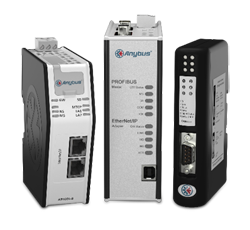Industrial network gateways basic function is to simplify connection between two different devices or systems.
An industrial automation gateway is a device capable of linking two networks that use different base protocols. There are over 150 open and proprietary networks available, so there are plenty of connection opportunities.
A network gateway can be implemented completely in software, completely in hardware, or as a combination of both, depending on the types of protocols they have to support. Industrial network gateways should be seen as a translator between a machine and an industrial data network, and can be used to connect devices such as robots, control systems, motors and sensors to any industrial network, regardless of the communication protocol.
Gateway types
Industrial network gateways can be broken down into two basic types. The first acts as a link between two different networks, such as linking Profibus to Ethernet. The second type is used to connect simpler devices, such as sensors, using a simple connection, typically connecting a device’s integral serial interface to a more complex network.
Bridging the gaps created in industrial data communication systems, modern industrial gateways for Ethernet-based connections now include support for web functions such as integrated web server with SSI, email client and FTP server.
Applications for industrial network gateways
 Gateways can be used in various industrial automation applications, for example, as a bridge between two PLC systems from different brands such as Siemens, Rockwell, Schneider, Mitsubishi.
Gateways can be used in various industrial automation applications, for example, as a bridge between two PLC systems from different brands such as Siemens, Rockwell, Schneider, Mitsubishi.
Another use of gateways is the segmentation of networks, where gateways are used to divide a network topology into logical segments. Gateways can allow clear divides to be created between different parts of the plant, both logically and electrically, where network performance optimisation and availability is needed.
Enterprise-level integration, where factory floor data must integrate with enterprise-level systems such as SCADA or SAP using OPC for dynamic data exchange, is another application for gateways, as is production line extension. Production line extension is where gateways are used to add segments of new machines with new network types into the manufacturing environment without major alterations and disruption to the existing production line.
Factory upgrades, where replacement of an old PLC system with up-to-date control equipment is needed, can, if gateways are used, allow the reuse of existing I/O modules and wiring infrastructure, thereby reducing upgrade costs considerably.
A major gateway application is providing PLC system extensions, where the gateway allows a simple, cost-effective way of connecting devices from several brands that use different network types. This enables the end user to select the best devices available for their application, rather than being reliant on what one manufacturer can provide.
Finally there is the use of gateways to extend the life of products from a device manufacturer due to it extending its network options. Gateways can easily provide support for new network technologies, without the manufacturer having to redesign their products to meet the new networking needs.
The Anybus X-Gateway family is a product line consisting of hundreds of different products aimed to connect almost every possible combination of two industrial networks.
The product family supports the most popular fieldbus networks such as ProfiBus, DeviceNet, CANopen and CC-Link as well as many industrial
Ethernet versions. Anybus X-Gateways are designed for use in industrial automation plants where increasingly many different industrial networks are used.
The X-Gateways help system integrators to easily interconnect between two networks enabling transparent information flow throughout the entire plant.

SlideShare
Twitter
Facebook
YouTube
LinkedIn